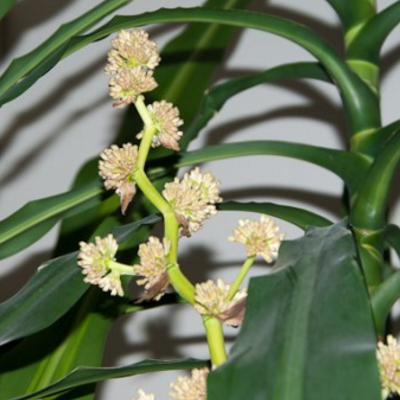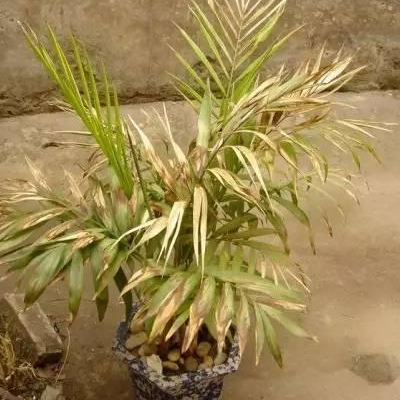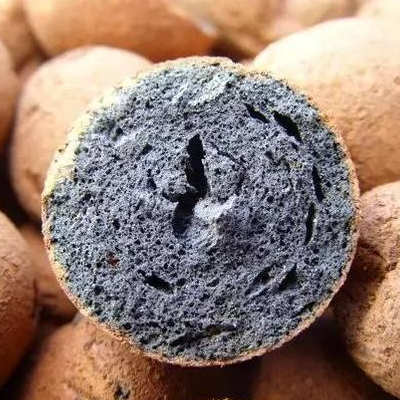What if the Brazilian wood grows too high? what if the leaves turn yellow?
Brazilian wood, this kind of plant is liked by many people, and it is super good-looking at home. What if this Brazilian wood grows too high? What if the Brazilian wood leaves turn yellow:

What if the Brazilian wood grows too high:
If your Brazilian wood is too tall, it will need to be pruned.
The specific pruning methods are as follows: first of all, before pruning, you should carefully observe the shape of the trees to see if the shape is appropriate. Second, determine which paragraph you want to trim and mark it. Before starting, it is recommended that you disinfect the pruning tools to ensure the safety of the plant. When pruning Brazilian wood, it should be noted that the pruning of this species is usually a branch that needs to be removed from the whole root node. When cutting, we should pay attention to first from top to bottom, and then cut from bottom to top, and pay attention to maintain the smoothness of the incision, preferably close to the trunk. In addition, the cut branches can be cut into new plants after treatment.
What if the Brazilian wood leaves turn yellow:
1. Alkalinity of soil and water
Brazilian wood is suitable for growing in slightly acidic soil, if the pH of the soil is not suitable, it is likely to cause the leaves to yellowing. In view of this situation, it is suggested that we should choose suitable soil when planting and alleviate it by watering some special fertilizer.
2. Overwatering
Brazilian wood has higher requirements for ambient air humidity, but it does not mean that water demand is also high. if the amount of water is not well controlled in the daily nursing process, resulting in stagnant water, it will also make the leaves of Brazilian wood yellow. In view of this situation, the best way to solve the problem is to control the amount of water and pay attention to ventilation to maintain the permeability of the soil.
3. Lack of light
Brazilian wood likes the sun, and many people put it in a bad light position in order to enjoy it indoors. in this case, it is possible in the short term, and if it takes too long, it will also cause the leaves of Brazilian wood to turn yellow. The specific solution is very simple, after a period of time, put the Brazilian wood in a sunny place for maintenance, and then move back after a period of time, so that both maintenance and viewing will not be delayed.
4. Poor ventilation
If the leaves of Brazilian wood grow luxuriantly, coupled with the fact that they have not been trimmed for a long time, it will lead to the problem of insufficient light in the internal branches and leaves. At this time, we should trim the branches and leaves in time, fertilize them, and carry out careful maintenance. I believe that the green leaves will soon be restored.
The treatment of Brazilian wood growing too high is introduced here. If there is a yellowing of leaves, look for the reasons above.
Does Brazilian wood blossom? what about the yellowing leaves of Brazilian wood? how to raise Brazilian wood?
✿ related reading recommended ✿ Reed picture ✿ family flower ✿ rose florescence ✿ Luoyang peony picture (◕ flowers ◕✿) flower bonsai, plant culture please pay attention to Merlot flower bonsai area! . Brazilian wood is native to western Africa, and is also distributed in Yunnan, Guangxi, Hainan, Thailand, Laos, Cambodia, Indonesia and the Americas. Brazilian wood is a very popular indoor large potted flower and tree, which is very suitable for indoor culture. Today, the editor will introduce how to raise Brazilian wood. . Temperature Brazilian wood how to raise, we should pay attention to its light and temperature, the temperature is too low, leaf tip and leaf edge will appear chloasma, serious will be frozen shoots or whole plant, in the northern winter to move to the greenhouse for maintenance. When the temperature is low at night, you can put on a plastic bag to keep warm. When the sun comes out during the day, when the room temperature rises, you should remove the plastic bag in time in order to cool down and prevent stuffiness. . Light Brazilian wood how to raise, Brazilian wood to adapt to a wide range of light, but not resistant to strong light, especially in May to October strong light will lead to leaf yellowing or leaf tip scorch, should pay attention to shading, give brighter scattered light. Although it is shady, but too shady will also make the leaf color dim, especially the variegated leaf varieties, the markings on the leaf surface are easy to disappear, reducing the ornamental value. . Watering Brazilian wood how to raise, Brazilian wood needs not much water, but higher humidity requirements. After putting on the basin, pour enough water into the root and place it in a brighter room or shade shed for maintenance. The basin soil should be kept moist and should often spray water to the leaves to improve the air humidity of the surrounding environment, but it is not suitable for basin soil to accumulate water, so as to avoid rotting roots caused by poor ventilation. . Fertilizing Brazilian wood how to raise, in the process of growth, Brazilian wood needs to consume some of its own nutrients, if you do not apply fertilizer in time, it will cause lack of stamina and gradual degradation. During the growing period, organic fertilizer was first applied at the base or edge, and then liquid fertilizer was applied every 15 to 20 days to ensure the luxuriant growth of branches and leaves. Fertilization should be thin fertilizer, do not thick fertilizer, fertilizer application period from May to October every year, stop fertilization in winter, and moved into the indoor winter. Does Brazilian wood blossom? After talking about how to raise Brazilian wood, shall we learn about the blooming of jaw cedar? Brazilian wood is to blossom, but it is not easy to blossom, it usually takes seven or eight years or more to see it blossom, and the Brazilian wood flower is not small, so it is more difficult to observe, so many people mean that it will not blossom. . what if the Brazilian wood leaves turn yellow? There are many causes, which can only be dealt with by prescribing the right medicine to the case. The editor simply lists several for you. 1. Watering problem: too much or too little watering of Brazilian wood will cause leaves to turn yellow, so we should pay attention to the right amount of watering. Brazilian wood needs little moisture and requires high humidity in the ambient air, but it is not suitable for pots and soil to accumulate water. 2. Air drying: Brazilian wood has relatively high humidity requirements for the surrounding environment. If the indoor air is too dry, the leaf tip of Brazilian wood will often turn yellow. At this time, attention should be paid to the use of water spraying, plastic film cover and other methods to increase air humidity to give Brazilian wood a better humidity growth environment. 3. Insufficient fertilization: Brazilian wood needs to continue to fertilize and change into new loose and fertile culture soil in time to gradually apply thin mature liquid fertilizer or compound flower fertilizer. . Brazilian wood is a beautiful, regular and world-famous new generation of indoor foliage plants. Suitable for display in the wider living room, study, living room, elegant style, simple, and with southern flavor. Today, the editor's introduction on how to raise Brazilian wood, how Brazilian wood blossoms, and how Brazilian wood leaves turn yellow is here. Thank you for your appreciation. What if the leaves of Brazilian wood turn yellow? Causes of yellowing of Brazilian wood leaves
Brazilian wood is a common indoor green potted plant, used to express good wishes, but Brazilian wood culture is not difficult, but the details can not be controlled well, Brazilian wood will appear leaf yellow phenomenon, the following arrangement affects the problem of Brazilian wood leaf yellow, hope to understand the analysis, it is helpful to the flower friends who cultivate Brazilian wood.
Causes of yellowing of Brazilian wood leaves 1. Insufficient water supply
Spring and summer, try not to put in the indoor tuyere, if the air flow is too fast, easy to accelerate leaf water evaporation, when the root water supply can not keep up, the leaves are easy to lose water and dry up.
2. The air humidity is too low
Create a humid microclimate for Brazilian wood, spray regularly around leaves or plants to increase air humidity, or add pebbles and water to the basin bottom tray.
3. Too much water
Too much water in the flowerpot can easily cause root rot, resulting in the scorched edge of the leaves, so make a good drainage layer when going up the pot, and mix coarse sand into the basin soil to facilitate drainage. The amount of water should be appropriate, adjusted according to the season, and then watered after the topsoil is dry, and less watering should be done in winter.
4. Excessive fertilization
Some flower friends like to spray foliar fertilizer of foliage plants, be sure to pay attention to the number of times and dosage, too thick and too often easy to burn leaves to leave spots.
5. Sun exposure
Avoid direct glare in summer to avoid focal edges.
6. Catch a cold in winter
The room temperature in winter should not be lower than 5 ℃, otherwise the leaf tip is also prone to black and brown spots.
What to do about the yellowing of Brazilian wood leaves? 1. Alkali in soil and water.
Brazilian wood is suitable for growing in slightly acidic soil, if the pH of the soil is not suitable, it is likely to cause the leaves to yellowing. In view of this situation, it is suggested that we should choose suitable soil when planting and alleviate it by watering some special fertilizer.
2. Overwatering
Brazilian wood has higher requirements for ambient air humidity, but it does not mean that water demand is also high. if the amount of water is not well controlled in the daily nursing process, resulting in stagnant water, it will also make the leaves of Brazilian wood yellow. In view of this situation, the best way to solve the problem is to control the amount of water and pay attention to ventilation to maintain the permeability of the soil.
3. Lack of light
Brazilian wood likes the sun, and many people put it in a bad light position in order to enjoy it indoors. in this case, it is possible in the short term, and if it takes too long, it will also cause the leaves of Brazilian wood to turn yellow. The specific solution is very simple, after a period of time, put the Brazilian wood in a sunny place for maintenance, and then move back after a period of time, so that both maintenance and viewing will not be delayed.
4. Poor ventilation
If the leaves of Brazilian wood grow luxuriantly, coupled with the fact that they have not been trimmed for a long time, it will lead to the problem of insufficient light in the internal branches and leaves. At this time, we should trim the branches and leaves in time, fertilize them, and carry out careful maintenance. I believe that the green leaves will soon be restored.
- Prev

What are the daily maintenance skills for loose-tailed sunflower leaves to turn yellow and dry?
Loose-tailed sunflower, generally indoor breeding, made of potted, this loose-tailed sunflower leaves yellow dry how to do? What are the daily maintenance skills of loose-tailed sunflower: what about the yellowing and withering leaves of loose-tailed sunflower? this is about the growing environment that loose-tailed sunflower likes. It is a tropical foliage plant and likes a warm and humid environment.
- Next

How to prevent the rotten roots of potted plants? what are the root media?
Potted plants, this is a lot of people are super like, this potted plant is so attractive, potted plants are super easy to rot roots, how to prevent potted plants rotting roots? What are the anti-rot root media of potted plants: ceramsite, ceramsite is a kind of ceramic granule fired at high temperature, and there are many porous particles.
Related
- Fuxing push coffee new agricultural production and marketing class: lack of small-scale processing plants
- Jujube rice field leisure farm deep ploughing Yilan for five years to create a space for organic food and play
- Nongyu Farm-A trial of organic papaya for brave women with advanced technology
- Four points for attention in the prevention and control of diseases and insect pests of edible fungi
- How to add nutrient solution to Edible Fungi
- Is there any good way to control edible fungus mites?
- Open Inoculation Technology of Edible Fungi
- Is there any clever way to use fertilizer for edible fungus in winter?
- What agents are used to kill the pathogens of edible fungi in the mushroom shed?
- Rapid drying of Edible Fungi

